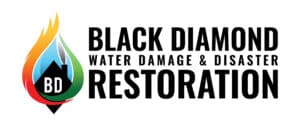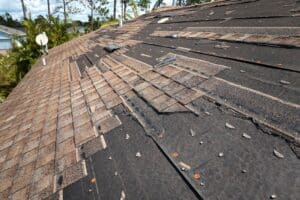When disaster strikes, swift cleanup and total restoration turn chaos into an opportunity to restore your property and regain control.
Time is critical when restoring your property after a devastating storm. Prompt cleanup and full restoration make all the difference in reducing damage and reclaiming your space.
But how long does the process take? If you’ve experienced a disaster, you’re likely wondering about the restoration timeline. In this blog, we’ll walk through the various stages of the restoration process and the expected estimated restoration time.
What do restoration teams do?
A professional team trained to return your property to normal is at the heart of every restoration project. Restoration specialists handle everything from the first assessment to the final touches when dealing with the aftermath of a flood, fire, hurricane, tornado, mold outbreak, or biohazard situation.
When a restoration team arrives, they quickly assess the damage, prioritize urgent needs, and get straight to work. Their tasks may include water extraction, structural drying, odor removal, mold remediation, and even carpentry repairs. Some teams also specialize in handling hazardous materials that could pose health risks to humans and pets.
Several factors influence the estimated restoration time, including the type and severity of the damage. Restoration teams tailor their approach to the unique challenges of each disaster and your particular home. Their expertise helps bring order to chaos during an incredibly trying time.
Rapid response
Every second counts in the frenzied aftermath of a severe storm. The quicker a restoration team arrives on-site, the better the chances of saving your home from further problems. Restoration teams are trained to assess and act swiftly. They are keen on addressing urgent threats like standing water or lingering smoke. Their priority is to stabilize the situation.
A fast response lessens immediate risks and prevents secondary damage, like mold or structural weakening. The pros bring specialized equipment coupled with expertise to tackle these issues head-on. The sooner they begin, the shorter your water damage restoration timeline will be.
Call them as soon as possible to increase the chances of fully salvaging your home and significantly cutting down long-term costs.
Initial assessment
The restoration process always starts with a comprehensive property evaluation. This includes inspecting visible damage, measuring moisture levels, and pinpointing the type of water present — whether clean, gray, or black. Depending on the property’s size and the severity of the damage, this phase can take anywhere from a few hours to a full day.
This first assessment helps create a personalized plan that fits the specific needs of your home or business. This approach ensures the restoration process runs smoothly and effectively. Communicating with your restoration team during this stage is crucial, as it lays the groundwork for the entire restoration journey.
Water extraction
The next step in the water damage restoration timeline is water extraction. This technique involves removing water from a specific location. You can accomplish water extraction using various methods, including pumping, vacuuming, and absorbing.
Following a flood or other water-related incident, the water extraction procedure helps stop additional damage from spiraling. This part of the water damage restoration timeline begins right after the initial assessment and takes 24-48 hours to complete.
Drying and dehumidification
Next, industrial-grade air movers and fans promote airflow and evaporation. These machines are carefully placed around the affected regions to encourage drying. Depending on the severity of the water issues, this process will take anywhere from a few days to a week.
Dehumidifiers are the unsung heroes of drying and dehumidification. These handy machines eliminate moisture from the air and accelerate the drying process significantly. They also remove excess humidity, which prevents mold and mildew growth.
The length of dehumidification is determined by the interior humidity levels and the quantity of water absorbed by drywall, wood, and carpets. Dehumidification, like drying, often takes several days to a week. This estimated restoration time takes three to seven days.
Mold assessment
Next, a comprehensive mold assessment takes place. If mold is detected, remediation efforts will begin immediately. Mold remediation includes determining the source of the moisture, isolating the afflicted area, removing mold-infested objects, and executing treatment strategies.
Mold remediation takes anywhere from a few days to several weeks, depending on the severity of the infestation.
Cleaning and sanitizing
Once your property is dry and mold-free, it’s time for cleaning and sanitizing. This step involves clearing debris, cleaning surfaces, and eliminating lingering odors. Thorough cleaning is the final touch that promotes a healthier environment for everyone who enters.
If your property is exposed to gray or black water, this stage becomes even more critical, as the risk of contamination is high. You’ll need to implement specialized cleaning procedures to ensure that any harmful bacteria or toxins are removed from the premises.
The cleaning and sanitizing phase typically takes one to two days, ensuring that your property is safe, clean, and free from harm. This thorough process will make you feel comfortable and safe returning to your space at the end of cleanup and total restoration.
Restoration and repairs
The final phase of the restoration process is where your property is finally brought back to life. Restoration work includes everything from minor repairs like drywall patching and repainting to major construction, such as rebuilding entire sections of your home. This phase plays a crucial role in determining the overall quality and functionality of your space.
The length of this phase varies greatly depending on the extent of the repairs required. Minor repairs may only take a few days, while more extensive restoration efforts can stretch over several weeks. Additionally, the availability of materials and contractors may also influence the estimated restoration time.
Final inspection
Once the restoration work is complete, restoration professionals with perform the final cleaning and inspection. This stage verifies that all water-damaged areas are thoroughly cleaned, sanitized, and returned to their pre-damage state.
The time required for this stage varies according to the size of the property and the intricacy of the restoration project. It usually takes a few days to check that everything satisfies the necessary criteria.
Call Black Diamond Restoration today!
When disaster hits, Black Diamond Restoration is your reliable partner for cleanup and total restoration services. With our knowledge, devotion, and commitment to perfection, we aim to surpass your expectations and restore your property to its former splendor.
If you’re experiencing water damage, fire damage, mold infestations, storm damage, or biohazardous circumstances, rely on us to offer timely, dependable, and compassionate service. Allow us to assist you in rebuilding and restoring your most important assets.
Contact Black Diamond Restoration today to get started.







